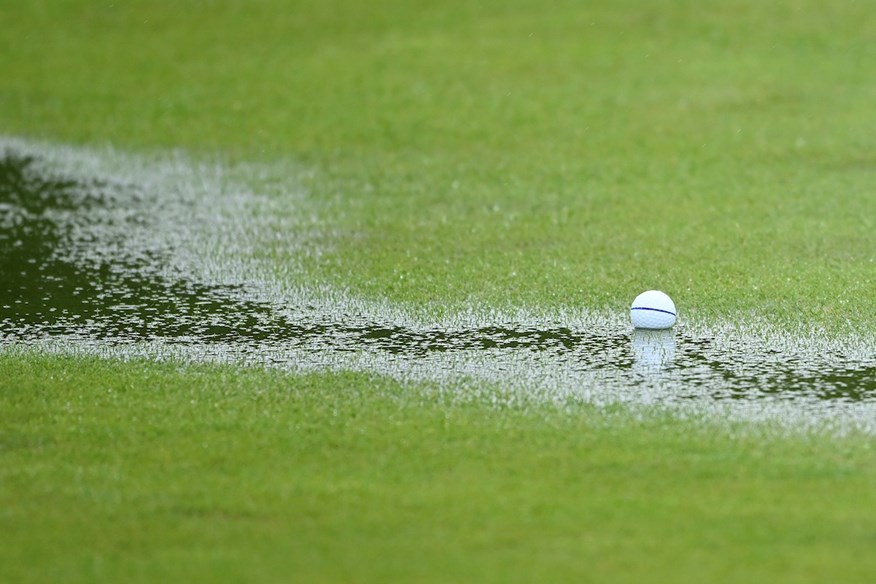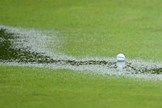What happens if you find your ball in standing water? Here’s what the Rules of Golf say
Last updated:

Torrential rain played havoc on the final round of the 125th US Open – and it was Sam Burns who came off worst. But what are the standing water rules in golf? Here’s what to do if you find yourself in that situation…
The final round of the 2025 US Open wasn’t short of drama, was it? For all the tournament felt like it was merely simmering over the first three days, it roared into life on Sunday.
A whole host of factors came together to provide compelling, unmissable action as the best players in the world wrestled with the brutal nature of the golf course and the weather.
Mistakes were being made all over the place as the lead continually changed hands, but one of the more controversial incidents involved 54-hole leader Sam Burns on the 15th hole.
Play had to be halted earlier in the day for lashing rain that waterlogged fairways and greens in a matter of minutes, and Burns felt the effects after his tee shot came to rest on the right edge of the 15th fairway.
At 1-over-par and in a tie for the lead at the time, it was a crucial point of the round. He took several practice swings, all of which sent water flying into the air.
Wisely, the 28-year-old called for an official to see if he could get relief for standing water under Rule 16.1, which covers “abnormal course conditions” defined as “animal holes, ground under repair, immovable obstructions or temporary water.”
The referee denied Burns, who then asked for a second opinion after further practice swings. Once again, no joy. On both occasions, the officials deemed that the standing water was not interfering with Burns’s stance or swing enough.

He went onto fat his approach, missing the green short and left before racking up a double-bogey that all but ended his hopes of clinching a maiden major victory.
In the end he signed for an eight-over 78 to finish five behind eventual winner JJ Spaun, but most of the talk in the aftermath was about the free drop many felt he should have been granted.
“That’s kind of the low part of the fairway there,” Burns explained. “When I walked into it, clearly you could see water coming up. Took practice swings and it’s just water splashing every single time.
“Called a rules official over, they disagreed. I looked at it again. I thought maybe I should get a second opinion. That rules official also disagreed. At the end of the day, it’s not up to me, it’s up to the rules official. That’s kind of that.”
Standing water rules in golf: Here’s what you need to know
Under Rule 16.1, interference exists when any of these is true:
- Your ball touches or is in or on an abnormal course condition,
- An abnormal course condition physically interferes with your area of intended stance or area of intended swing, or
- Only when your ball is on the putting green, an abnormal course condition on or off the putting green intervenes on your line of play.
So, if you find yourself in a similar situation at your local club and think standing water is interfering with your stance or swing, here is what to do.
First, speak to your playing partner or partners and ask for their opinion. If you’re in agreement, you next need to find your nearest point of relief. That is, the nearest point to you where your stance and swing are not impacted by the water.
Once that has been found, you are allowed to drop it within a club length of that point no closer to the hole.
Don't want to get caught out during a round? This is a must for all club golfers!


